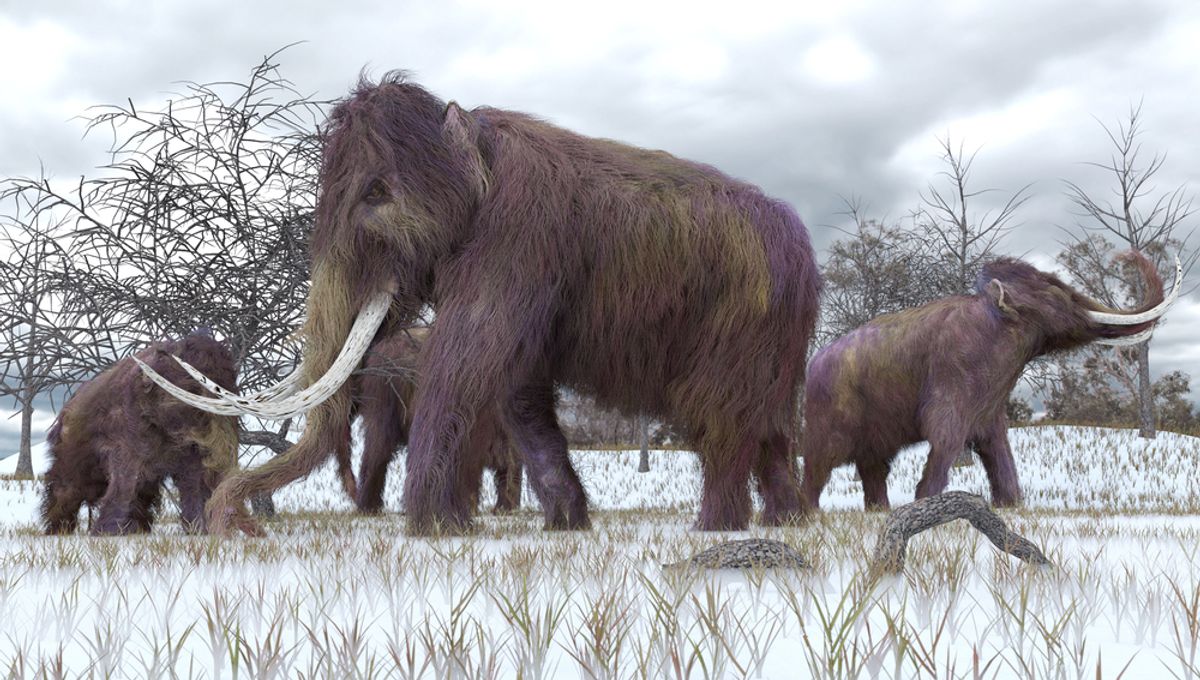
In 2021, ancient DNA was recovered from a 1.2-million-year-old mammoth tooth – the oldest DNA that had ever been recovered at the time. Not only did this incredible feat push the boundaries of what scientific methods are capable of, but the project also revealed a new lineage in the mammoth family.
The genetic material was acquired from the teeth of three mammoths found buried in the Siberian permafrost during the 1970s. Two of these specimens are over 1 million years old and predate the existence of the woolly mammoth, while the third is roughly 700,000 years old and represents one of the earliest known woolly mammoths.
“This is – by a wide margin – the oldest DNA ever recovered,” Professor Love Dalén, study author from the Centre for Palaeogenetics in Stockholm, said at a press conference at the time. However, it has since been beaten by 2-million-year-old DNA found in northern Greenland.
The second oldest of the specimens is from an ancient steppe mammoth (Mammuthus trogontherii), a direct ancestor of the woolly mammoth (Mammuthus primigenius), but the oldest specimen belongs to a previously unknown genetic lineage of mammoth, now referred to as the Krestovka mammoth. It also now looks like the iconic Columbian mammoth (Mammuthus columbi) that inhabited North America during the last Ice Age was a hybrid between this Krestovka lineage and the woolly mammoth.
The researchers conservatively estimated the oldest mammoth to be 1.2 million years old since this is the age of the geological section it was discovered in. However, mitochondrial genome data indicated the specimen could actually be up to 1.65 million years old, while the second mammoth could be 1.34 million years old. Whatever estimate you take, this is significantly older than the previous record-holder for the oldest sequenced DNA, which came from a horse found preserved in Canadian permafrost dating to 780,000-560,000 years ago.
The genome of these ancient mammals has seen much better days and has become extremely degraded over the millennia. Instead of a nice long strip of flawless genetic material, the researchers were confronted with billions of tiny odd fragments of DNA, which they had to painstakingly piece together.
“A good analogy is to think about a puzzle. We have many, many small puzzle pieces and we’re trying to reconstruct the puzzle. The small piece you have, the harder it is to reconstruct the whole puzzle,” explained Dr Tom van der Valk, lead study author from the Centre for Palaeogenetics in Stockholm.
To make matters even harder, many of the puzzle pieces they came across were not even the mammoths but belonged to bacteria or fungi that had contaminated the sample. Fortunately, they did have a few clues that helped them piece together the puzzle. Just like looking on the front cover of the puzzle box for clues, the researchers had high-quality genomes of woolly mammoths and present-day elephant relatives to use for reference.
Wait for it.
Now this research has shown what’s achievable, the team believes it’s theoretically possible to recover DNA that’s even older than the mammoths’. Professor Dalén noted that the Northern Hemisphere doesn’t contain any permafrost that’s older than 2.5 million years, so recovering DNA beyond this time may prove extremely difficult, if not impossible. Nevertheless, a wealth of natural history can be dug out from this widespread timeframe, not least some of the defining chapters in our own human story.
“It’s quite possible that, in the future, the methods will be there to recover DNA from human non-permafrost specimens that are close to 1 million years old,” speculated Professor Dalén.
“The other alternative would be to find a Homo Erectus in the permafrost. No such finds have been done to date, but it’s quite possible that someone will find human remains in the permafrost of this age. In that case, it would be more-or-less equally easy to get genomic DNA from these [hominin specimens] as it was for us to get DNA from the mammoths.”
The study is published in Nature.
An earlier version of this article was published in February 2021.
Source Link: 1.2-Million-Year-Old DNA Extracted From Mammoth Tooth Buried In Siberian Permafrost